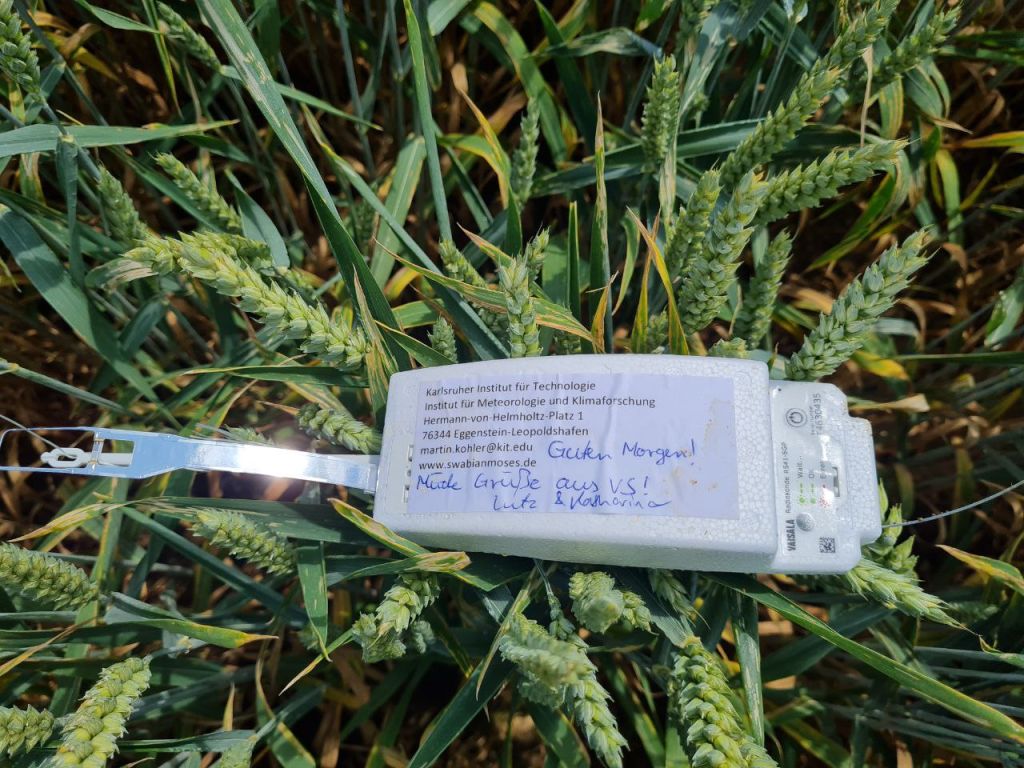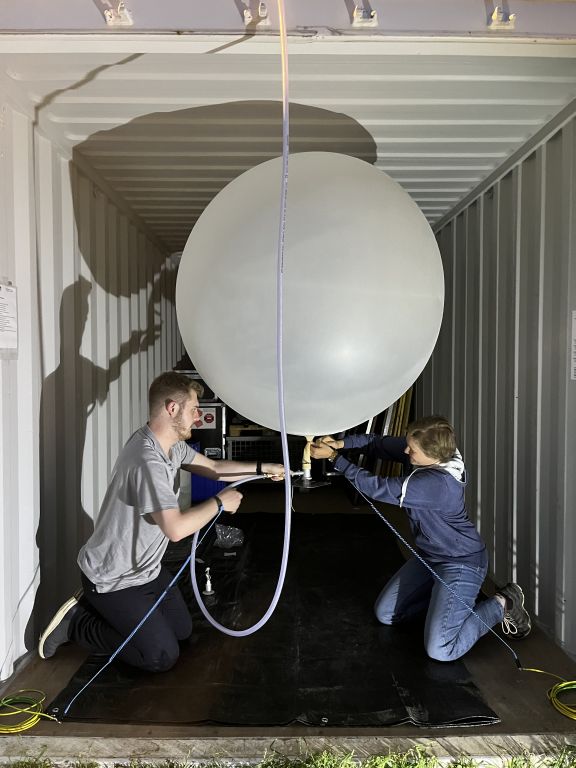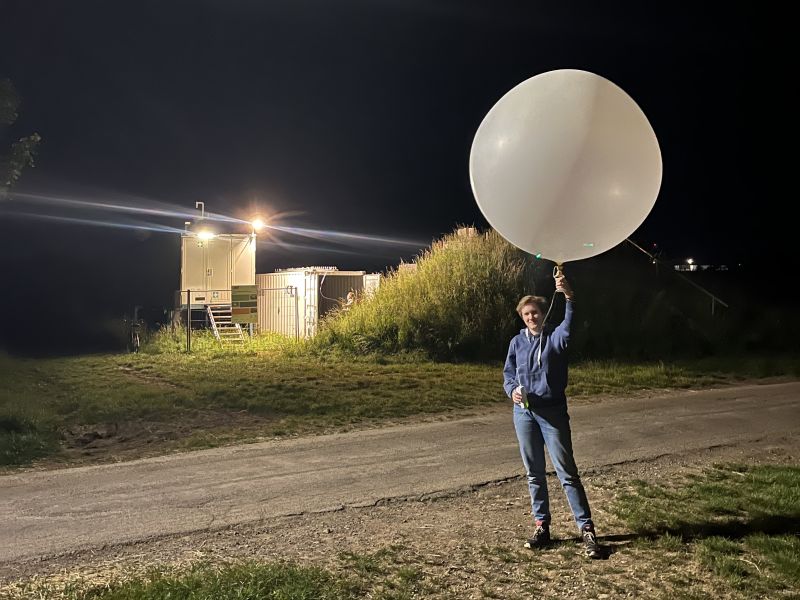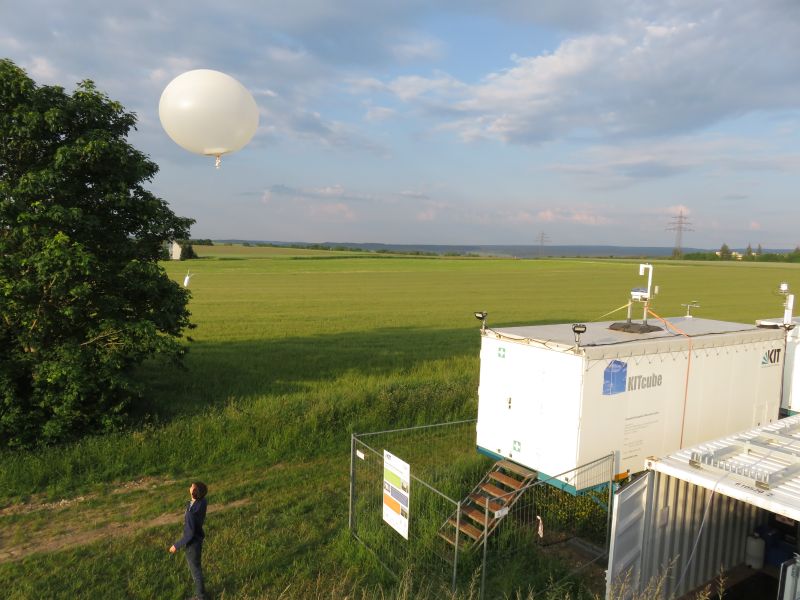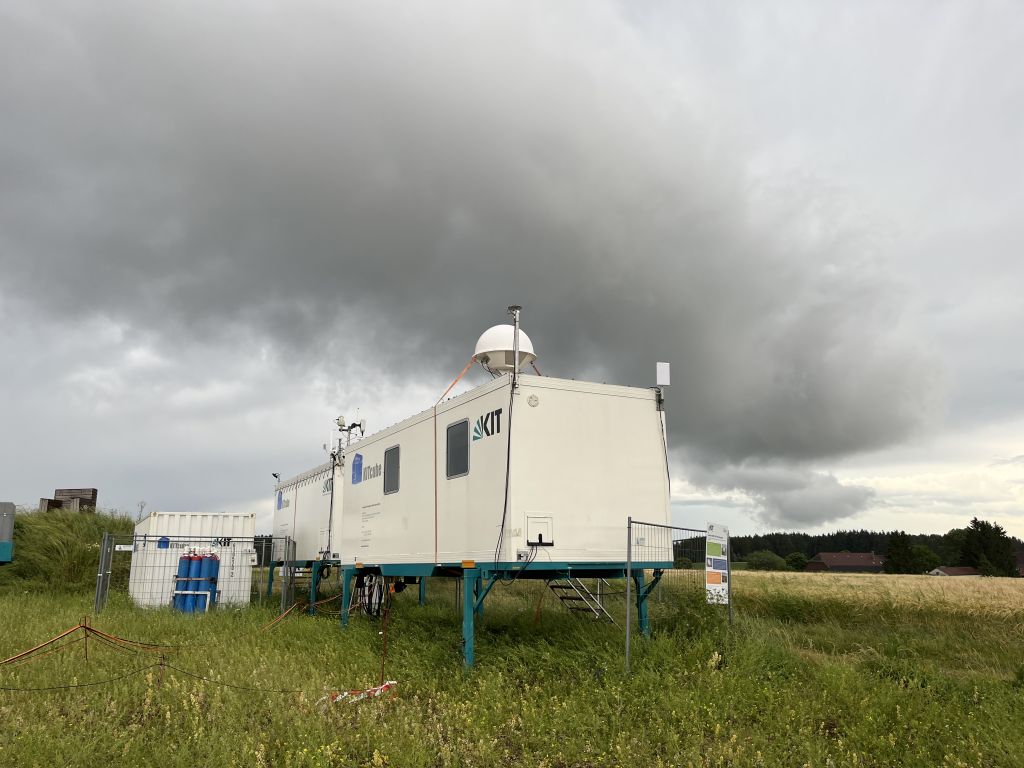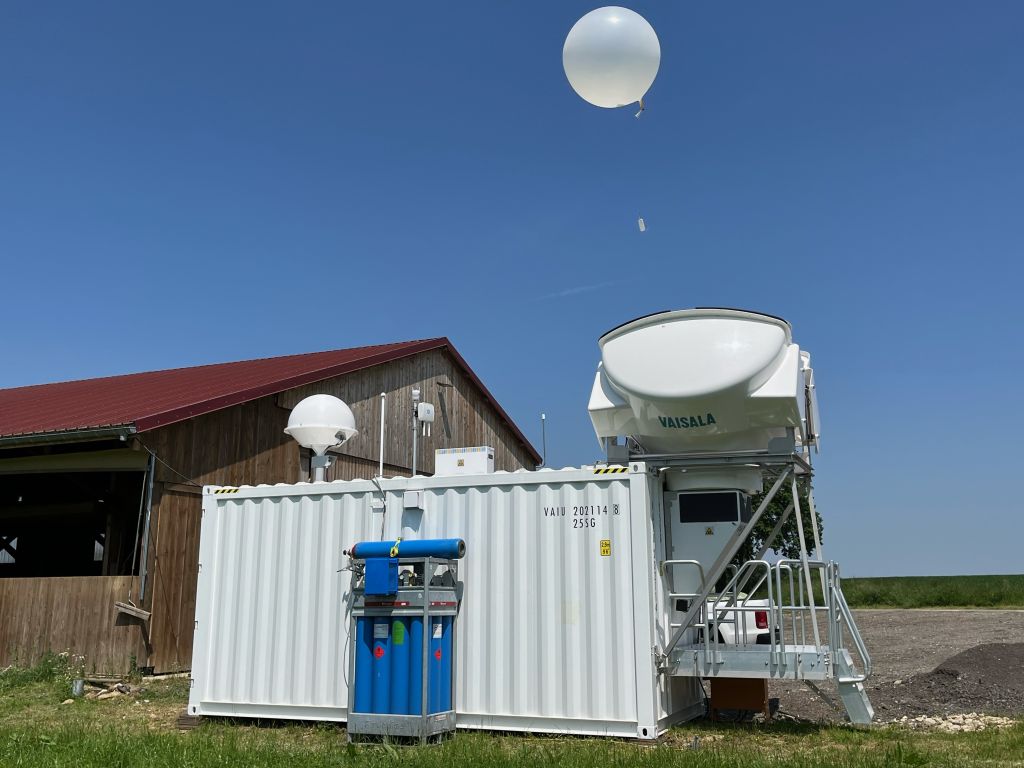Radiosonde
A radiosonde is a balloon-borne measurement system with sensors for temperature, air pressure, and humidity (Fig. 1). The wind speed and direction is determined using the GNSS-receiver (e.g. GPS).
For preparations, the sonde is initialized and a balloon is inflated (Fig. 2). After initialization, the Sonde has to be connected to the balloon via a balloon cord and taken to a suitable launch site (Fig. 3). The balloon is released at the launch time and pulls the sonde upwards (Fig. 4).
Throughout its ascent, the radiosonde transmits measurement data to the ground station (Fig. 5). The balloon can reach heights of more than 20 km. Therefore, the sonde gathers information about the vertical structure of the atmosphere right into the stratosphere.
In addition to three manually operated radiosonde systems, KITcube operates also an automatic radiosonde system (Vailsala AS41), which autonomously handles both preparations and soundings (Fig. 6). Launch times can be scheduled or initiated at short notice.
Measurement example from Rottenburg , 23rd June 2021:
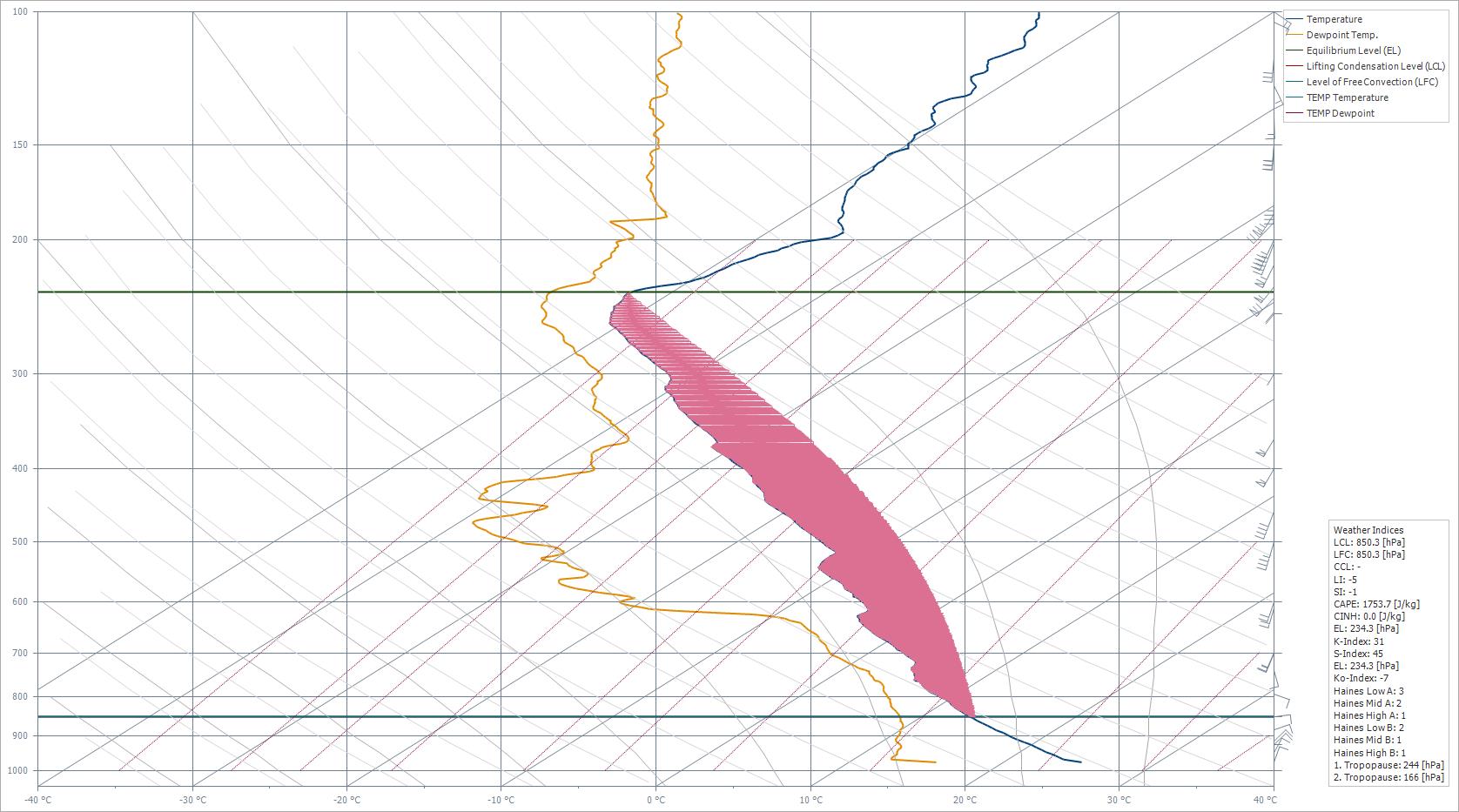
The figure presents a typical visualization of a thermodynamic diagram, which is used to analyze radiosonde ascents. The blue line represents the measured air temperature, the yellow line the dew point profile. The red area highlights the Convective Available Potential Energy (CAPE), a key parameter for the energy available for convection. High values above 1500 J/kg indicate an increased potential for heavy thunderstorms.
On June 23, 2021, a supercell developed and moved over Rottenburg. Heavy precipitation and hail were the consequence. Detailed investigation of the development of the atmosphere was possible due to radiosondes launched every 1.5 hours. In addition to the CAPE, also the vertical wind shear contributed to this development. Vertical wind shear refers to changes in wind direction and speed between the land surface and higher layers of the atmosphere (see figure).
|

